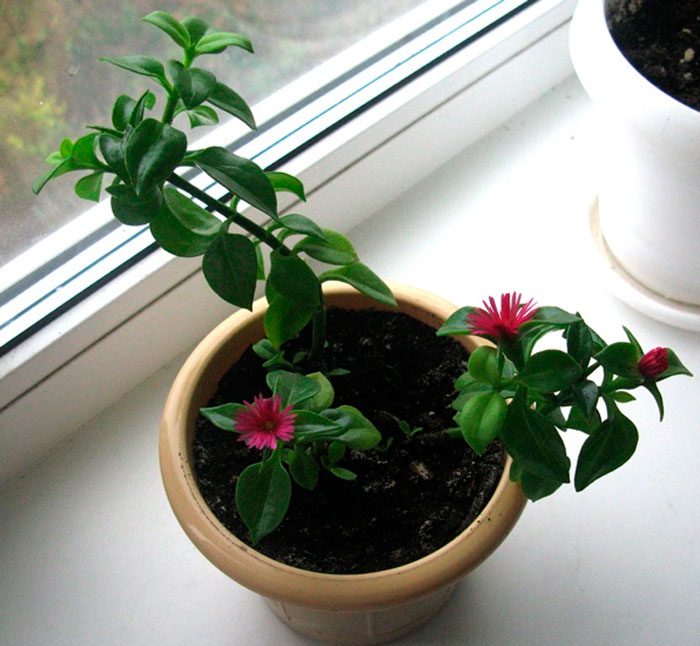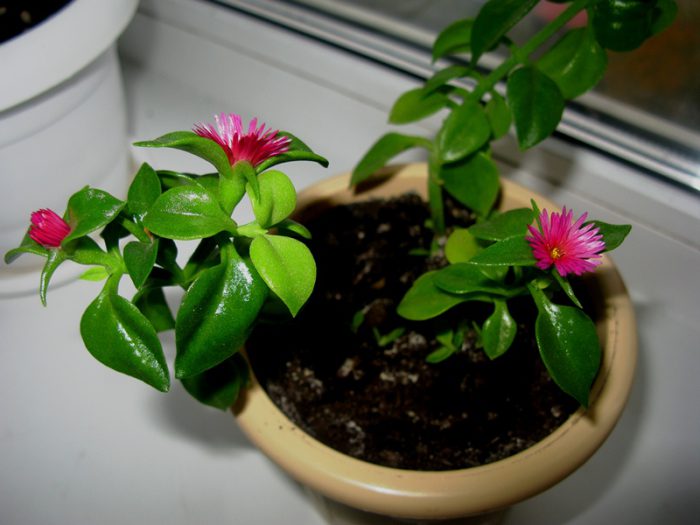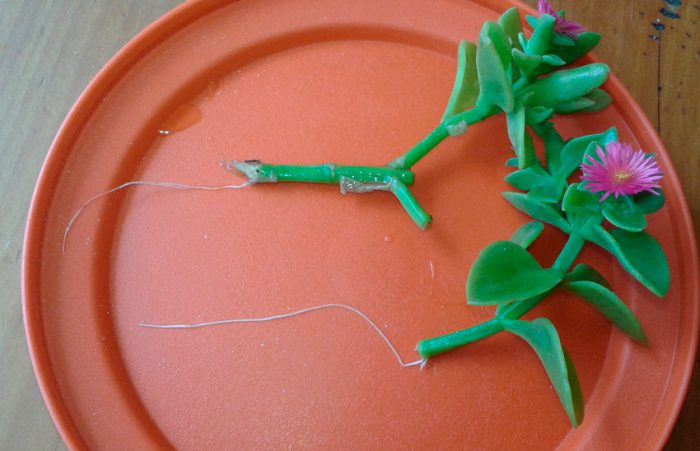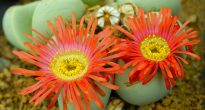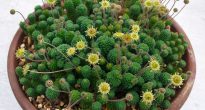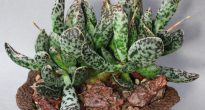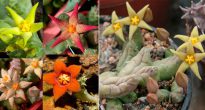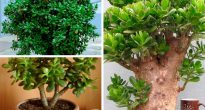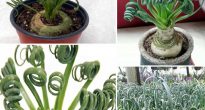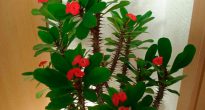An evergreen plant like aptenia (Aptenia) is a succulent and is directly related to the family Aizoaceae or Mesembryanthemaceae. This plant comes from Africa and South America.
The plant got its name from aptenia because of its wingless seeds, so “apten”, if translated from Greek, means “wingless”. This plant is also called mesembriantemum, which when translated from Greek means "mesembria" - "noon" and "anthemom" - "flower". This name is due to the fact that the flowers of the plant bloom precisely at noon.
Such an evergreen succulent has creeping fleshy stems, on which fleshy heart-shaped leaves are located opposite. Small red flowers are located at the ends of the lateral branches in the leaf axils. The fruit is a capsule with chambers. Each chamber contains 1 brownish-black seed of a rather large size, the surface of which is rough.
Content
Aptenia care at home
Illumination
This plant loves light. In the summertime, it is recommended to move it outdoors, where it feels great in direct sunlight. If in the summer the flower is in the house, then it must be protected from the direct midday rays of the sun. It is not necessary to shade in autumn and winter.
Temperature regime
In the warm season, it is recommended to maintain the air temperature at 22-25 degrees. The flower should overwinter in a cool (from 8 to 10 degrees) place. With a warm winter, the plant will need additional lighting.
Air humidity
Such a plant does not need high humidity, and it feels quite comfortable in the dry air inherent in city apartments. However, in the cold season, it must be kept away from heating appliances.
How to water
In spring and summer, water such a plant should be moderate. Watering should be done only after the potted substrate has dried to the very bottom. In winter, watering is extremely rare, but at the same time they do not allow wrinkling of the leaf plates.
Top dressing
In the spring and summer, the aptenia needs to be fed once every 4 weeks. To do this, use a complex fertilizer for cacti and succulent plants. In winter, fertilizers are not applied to the soil.
Pruning
Such a plant requires formative pruning and is recommended to be carried out in the autumn. The fact is that due to the pruning carried out in the spring, flowering occurs somewhat later.
Transplant features
The transplant is carried out in the spring and only after the root system ceases to be placed in the container. A suitable dredge consists of sand and turf soil (1: 1). Purchased soil for succulent plants and cacti is suitable for planting. Do not forget to make a good drainage layer at the bottom of the container.
Reproduction methods
Can be propagated by seed or cuttings.
Sowing seeds is carried out on top of sand or sand mixed with light soil (do not deepen). The seedlings will appear soon enough. After that, the container with the seedlings is moved to a bright place where the temperature does not drop below 21 degrees. Watering is extremely careful, as the seedlings can easily rot. After 1 month after the emergence of shoots, the first pick should be carried out. In the process of growth, young plants are transplanted into individual pots with a diameter of 5 to 7 centimeters.
Before planting the cuttings, they are left in a dry, dark place for several hours to dry. For rooting, you can use vermiculite, moistened sand, or sand mixed with purchased soil for succulents. A glass of water is also suitable for this purpose, but a small amount of activated carbon should be added to it. After rooting, the plants are transplanted into separate pots with a diameter of 5 to 7 centimeters.
Pests and diseases
It is quite resistant to pests and various diseases.
Sick, as a rule, as a result of improper care:
- Falling foliage - overdrying of the earthen coma or stagnation of liquid has occurred in the soil. The plant hibernates in the warmth.
- Lack of flowering - warm wintering, little light.
- The appearance of rot - overflow, oversaturation of the soil with nitrogen.
Main types
Aptenia cordifolia (Aptenia cordifolia)
Or mesembryanthemum cordifolium - this evergreen plant is a perennial and grows relatively quickly. The spreading stems are creeping. The greenish-gray fleshy stems have an oval or tetrahedral sectional shape. The rich green, opposite fleshy leaves have a heart-lanceolate shape, and they do not exceed 2.5 centimeters in length. Small, single, multi-petal flowers can be either axillary or apical. They can be painted lilac-pink, deep purple or crimson.
Variegated Aptenia (Aptenia Variegata)
Compared with cordifolia aptenia, it has smaller shoots and leaves; this is a cultivated variegated form of aptenia.


